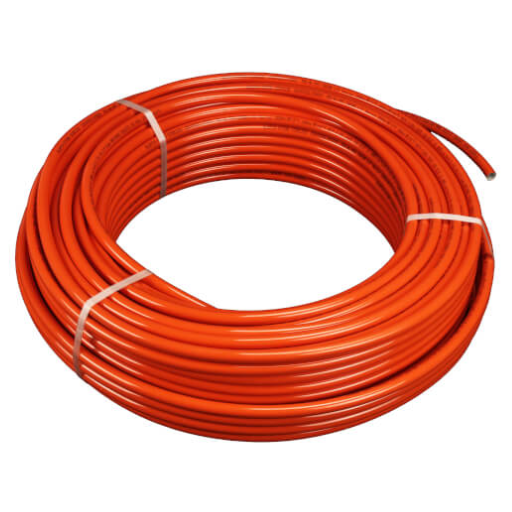Regarding present-day plumbing solutions, PEX (cross-linked polyethylene) pipe is one of the most popular choices for homeowners and professionals. 2″ PEX pipe is known for its flexibility, durability, and easy installation, which makes it better than traditional materials such as copper or PVC. This article will provide an in-depth guide on everything you need to know about 2” PEX pipes for plumbing, including benefits, applications, installation methods, maintenance tips, and more. Whether planning a renovation project or simply wanting to upgrade your current plumbing system, this comprehensive manual will give you the information required for decision-making.
What is a 2″ PEX Pipe?
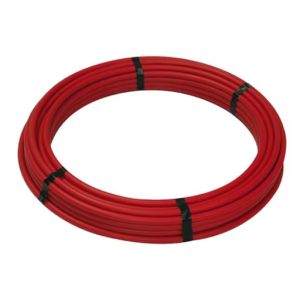
Image source: https://www.zoro.com/
2” PEX pipe refers to a type of cross-linked polyethylene tubing designed specifically for plumbing systems. Its larger diameter enables its application in various areas, including water distribution and hydronic heating systems. The strength of this particular tube is improved during manufacture through cross-linking, which also augments chemical resistance and the ability to withstand high temperatures/pressures. Moreover, being lightweight, flexible, and easy to fix makes 2″ PEX pipe faster and less labor-intensive during plumbing projects than conventional pipe materials used for the same purposes. Due to versatility, there isn’t any doubt that it can work well within commercial buildings, complexes, and residential houses, too.
Understanding PEX Pipe and Its Uses
PEX has become popular due to its many benefits that suit different plumbing requirements. For instance, because it is flexible yet strong enough, some people utilize it even in underfloor heating systems where other pipes might fail, such as those made from copper or PVC, etc., since they corrode quickly or develop pinholes, eventually leading to leakages again. Additionally, since pex doesn’t rust over time as other materials do, there’s no need to change them frequently, saving on costs. Not only that but availability is also needed anytime apart from this fact alone! Also, pecs’ resistance against scale formation and chlorine ensures no water quality problem arises, as might be the case when using some materials. According to recent findings, PEX can easily be snaked into walls and ceilings for retrofitting old plumbing systems without having to demolish much, making it an ideal choice, especially where many rooms are above each other, like hotels, etcetera. Its capability to withstand freeze damage makes pex reliable during winter in areas with low temperatures, thereby giving peace of mind. In conclusion, PEX pipe is famous for its affordability and efficiency, which suit new installations and upgrades, making it a favorite among contractors and homeowners.
Types of PEX Pipe: PEX-A, PEX-B, and PEX-C
If you research PEX pipe, you will come across three categories: PEX-A, PEX-B, and PEX-C, each with unique features. For example, when it comes to flexibility and resistance to freezing, nothing beats PEX-A — made using the Engel method, which allows for enhanced functional expansion capabilities in cold weather. Conversely, although slightly less flexible than type A, type B is produced through the silane method that imparts excellent high-temperature tolerance and can be used for hot and cold water lines. Finally, yet importantly, there’s also PE-Xc, which is cheaper because it is manufactured using a less expensive process but lacks durability under extreme pressures or temperatures like its counterparts A and B do. These disparities are helpful when selecting suitable plumbing materials not to compromise performance or longevity during installation.
Advantages of Using 2″ PEX Pipe in Plumbing
The 2-inch pex pipe has proven advantageous in plumbing for several reasons, as I have discovered over time. In addition to this being much lighter weight which makes handling long runs easier on me since they’re not as heavy duty materials like other types would be; also because it is so flexible there needs to be fewer fittings thereby reducing chances of leaks occurring due joint failures along these lines even though those concerns still exist where necessary precautions aren’t taken into account such as proper bracing against walls etcetera while considering potential drop pressure loss situations too often overlooked by many people who use inflexible pipes only thinking about corrosion resistance properties without realizing their shortcomings concerning pliability required during installation processes themselves followed through well enough eventually leading onto my next point concerning maintenance considerations throughout their lifespan coupled with knowledge about long-term effects caused by scale buildups inside them including financial implications among others involved hereafter having said all that now let us look at its affordability vis-à-vis traditional materials used within plumbing systems today taking into consideration both initial investment costs associated alongside labour intensiveness required during project implementation phases thus far making two inch pex pipe my preferred choice whenever undertaking plumbing works within modern day buildings.
How Do You Install 2″ PEX Tubing?
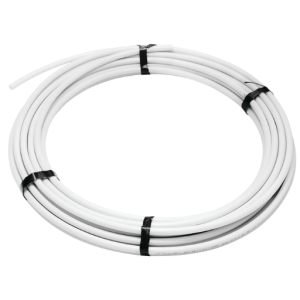
The installation process for 2″ PEX tubing is relatively simple but needs to be done carefully and with attention to detail. Begin by measuring and cutting the tubing with a PEX cutter, ensuring the cuts are clean and straight. After that, attach a fitting or connector to one end of the tube and fix it using either a crimp ring or clamp, depending on which type you are working with – use the appropriate tool to do this, too. Follow manufacturer instructions for spacing and support as you run along walls or ceilings (where it could sag). Once everything is connected, fill the system with water [test for leaks]. Lastly, insulate wherever necessary to not lose heat energy – this will also protect from temperature changes.
Essential Tools and Materials for Installation
To install two inches of Pex tubing successfully, you will need some tools:
- PEX Cutter: This is a special kind of cutter that ensures clean and accurate cuts for good fitting.
- Crimping Tool: It tightens crimp rings around PEX fittings, making them leakproof.
- Clamp Tool: It works similarly to crimping but is mainly used with clamp-type fittings where a secure connection is needed.
- PEX Fittings: These include elbows and tees, among others, which are designed specifically for use in PEX applications.
- Support Hangers: They help hold up tubing against walls or ceilings so they don’t hang loose, thus meeting building code requirements
- Measuring Tape: Used during tube-cutting and planning layouts to ensure accuracy.
- Teflon Tape: Recommended when working on threaded connections because it helps create tight seals that prevent leakage
- Insulation Material: Required for insulating exposed areas such as those found in unconditioned spaces, promoting energy efficiency.
With these items at hand then installing 2″ pex pipes will be done faster and better.
Step-by-Step Guide to Installing PEX-B Tubing
Setting up PEX-B pipes is a procedure that needs to be done meticulously. Below is an outline of how I go about the installation:
- Planning and Layouting: When I plan, I always consider all the lengths and angles necessary for my tubes. This way, I can minimize fittings.
- Cutting the PEX: I cut them clean and straight using a cutter designed for PEX to ensure they fit correctly. Before cutting anything, it’s always good to measure twice.
- Joining Fittings: At this stage, I connect elbows or tees. When joining crimp-type fittings, I slide a crimp ring on the tube, fit it in the joint, and place the ring about 1/8 inch from the end.
- Securing Connections: Using my crimper tool tightly secures the crimp ring around the fitting, which seals off water tightness; every connection should be checked closely to ensure they fit well with each other.
- Finishing System: Once all connections have been made, let me test the system by filling it with water and looking for leaks. This is done to guarantee that everything was fixed properly.
- Insulation: To save energy, especially where temperature changes occur, insulation should be put around any exposed areas of PEX pipes, hence improving their efficiency.
In summary, following these procedures will help me succeed in installing PEX-B tubing in my plumbing project.
Common Mistakes to Avoid During Installation
- Ignoring local codes and regulations: Before you begin the installation process, knowing your area’s plumbing codes is essential. Not following these rules can result in expensive repairs and legal problems.
- Using Incorrect Tools: The use of the wrong tools may weaken connections. Always employ a dedicated PEX cutter and crimping tool to ensure neat cuts and correctly secured fittings.
- Over tightening Connections: It is true that connections need to be well fastened, however, this should not be done to an extent of damaging tubes or causing leaks. When securing crimp rings, follow manufacturer recommendations for the force applied.
These mistakes are among many others that can undermine the efficiency and reliability of PEX-B tubing installation.
What Are the Different Connection Methods for PEX Tubing?
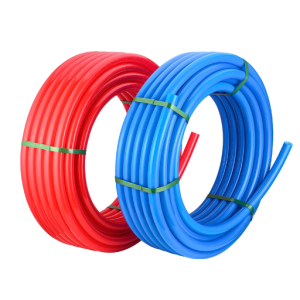
There are various connection methods used with PEX tubing, each having its applications plus advantages:
- Crimp fittings: This involves using copper or brass crimp rings, which are secured around the fitting using a crimping tool. It is popular because it’s reliable and easy to do.
- Clamp (or Cinch) Fittings: Stainless steel clamps are used in this method; they’re tightened around fitting by a special tool, thereby creating a tight seal between two pieces of pipe
- Push-Fit Fittings: These allow quick connection without any need for additional tools, i.e., once the PEX tube is pushed onto the fitting, the gripping mechanism holds it in place
- Expansion Fittings: An expander tool is utilized here to increase the diameter of the PEX tube, making it possible for a contraction over a fitting, then, when cooled, creates a tight seal around the joint area
- Threaded Fittings: PEX can sometimes be connected with traditional plumbing fixtures through threaded fittings, which screw together tightly enough to form a secure attachment, but still lose fit, allowing some movement if necessary.
The choice between different types usually depends on what one intends to achieve. Some may be more suitable than others depending on specific needs required by your project plan or local code regulations.
Using Crimp Fittings and Copper Crimp Rings
Crimp fittings are used to join PEX tubing and other pipes. Crimped connections are popular due to their reliability and ease of installation. First thing first: make sure the pipe is cut squarely with no burrs on either end; then slip a copper ring over one side before inserting it into the next piece. A good tool must be used for this job so that all rings can be evenly compressed around tubes, making tight seals – inspection should always follow if these things were done right because only complete crimps prevent leaks from happening. It is also essential to regularly inspect such joints as they could compromise plumbing system integrity and long-term performance if not maintained well. Manufacturers’ instructions and local building codes should be followed when in doubt about what best practice entails.
Push-to-Connect: How SharkBite Fittings Work
SharkBite fittings are designed for easy, fast plumbing connections. I just need to push them together – no fiddling with nuts and bolts or soldering is required! The secret lies in an internal grip ring that holds onto the pipe tightly once inserted into place; this creates a watertight seal without any additional tools necessary, making things go faster while minimizing potential leak points! What really stands out about these connectors, though, is how they allow me plenty of flexibility during my project since they can easily be removed using simple release tools if the need arises, thus enabling convenient repositioning or swapping out parts without much trouble being caused by it. For someone like myself who doesn’t have much experience working around water systems but still wants everything done as efficiently as possible, SharkBites would come in handy.
Comparing Crimp, Clamp, and Expansion Methods
When evaluating PEX tubing joining methods—crimp, clamp, and expansion—reliability, ease of installation, and adaptability should be considered.
- Crimp Method: This method employs copper crimp rings that are tightly compressed around the PEX tubing and fit with a specialized crimp tool. Although precision is required to prevent leaks, these fittings are notable for their durability and secure connections.
- Clamp Method: The cinch or clamp method uses stainless steel clamps to hold the PEX tube over a fitting. Unlike crimping, where you need specific tools other than the clamp itself, this can be advantageous during fast installations but may not create a connection that is as permanent as when crimps are used.
- Expansion Method: With this technique, one expands an end of a pex pipe before inserting any fitting into it, then lets the pipe shrink back down around that fitting, thus creating a tight seal between them both. In tighter spaces, an expansion fitting may be easier to install; however, such tools can be more expensive and less commonly owned by DIYers.
In conclusion, each method has its advantages and suitability depending on specific plumbing requirements, project scale, and user experience level.
Is 2″ PEX Pipe Safe for Potable Water?
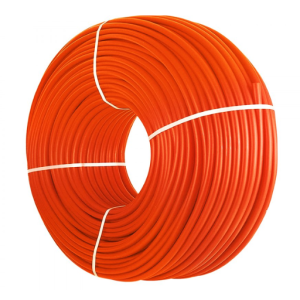
Yes, a 2″ PEX pipe is safe for drinking water. PEX (cross-linked polyethylene) has been approved by different health and safety organizations, such as the National Sanitation Foundation (NSF), for use in potable water systems. This tubing does not release toxic chemicals into the liquid conveyed, which is why it is commonly used in home plumbing. Nevertheless, you must ensure that any particular brand or type of PEX you use meets local building codes and standards applicable to potable water.
Health and Safety Standards for PEX Pipe
PEX pipes should meet strict health and safety regulations to guarantee their suitability for use with portable waters. These rules are set by different bodies like NSF (National Sanitation Foundation), UL (Underwriters Laboratories), or ASTM International, which ensure compliance through certification processes. For instance, NSF certifies materials used in making these tubes to prevent them from leaching harmful substances into tap water. Additionally, there are specific ASTMs that guide on various aspects, including manufacturing methods, testing procedures, performance requirements, etcetera, for all products made out of crosslinked polyethylenes according to their classifications under different working conditions such as temperatures range – cold only up until hot service levels otherwise known as continuous operating temperature ratings COTR’s – where each class has its pressure rating at maximum sustained working pressure MSWP.
Why PEX-B Tubing is Suitable for Drinking Water
PEXB pipes have a lot of advantages over other types of tubes, especially when delivering clean drinking water, because they can adapt quickly, even where there may be scale buildup due to stiff or chlorinated waters. Also, they can withstand high heat levels compared to traditional materials like copper. It also does not rust fast, thus keeping quality over long periods. Besides being easy to fit, it lowers leakage chances, enhancing reliability within plumbing systems. Even recognized safe organizations like NSF, among others, demand higher standards from this product line aimed at protecting users’ lives during consumption, thus combining strength, durability, safety, and efficiency so that people can always have clean supplies.
Maintaining Water Quality with PEX Plumbing
Based on my experience, PEX plumbing is straightforward to keep up with because of its characteristics. Among the things that I have noticed is that it does not allow scale and chlorine into contact with water, thus preventing contaminants from building up, which would otherwise affect the taste and safety of drinking water. Another essential thing to do is to ensure fittings are regularly checked and connections tightened so that there are no leaks that can reduce the life span of installation or compromise the quality of supplied water. Occasionally, Flushing systems while monitoring clarity and smell will help detect potential problems early enough. In conclusion, all PEX products used in my installations must be NSF certified as this guarantees their safety according to health standards for potable water.
What are the best practices for using PEX pipes in water systems?

Certain precautions should be taken for a Pex tube to achieve maximum efficiency in a water system. First, one should never expose the pipes directly under sunlight or to extreme temperatures during installation. This may lead to degradation due to UV rays attacking the plastic materials used to make them. Secondly adequate support for these tubes must be ensured by spacing supports every 32 inches apart so as prevent sagging which can cause blockage at some points along its length when still new. When connecting pex with other materials, make sure appropriate connectors are used such that leakage-free connection is achieved between two different types of pipes having dissimilar properties like copper pipe jointing with polyethylene, etcetera. Furthermore, it leaves enough slack in piping runs where temperature changes cause expansion or contraction effects . Checking joints regularly for leaks and occasional flushing can help maintain good quality water throughout the plumbing system. Therefore, investing in this type of product assures me of safe supplies given that they meet required standards for drinking purposes based on their certification being Nsf compliant.
Choosing Between PEX-A, PEX-B, and PEX-C for Your Needs
When choosing PEX piping for plumbing projects, knowing what sets PEX-A, PEX-B, and PEX-C apart is essential.
- PEX-A has excellent flexibility and can resist kinking, allowing for easy installation even in compact spaces. It has the most significant degree of expansion, which helps prevent pipe bursting during freezing temperatures, therefore being the most expensive option in most cases.
- PEX-B balances cost with performance, being less flexible than type A but still holding up under pressure well while resisting chlorine and scale buildup. It can also be heat-fused quickly, making connections very secure.
- PEX-C is the least costly among all three available types, often used for lower-demand applications only. Its flexibility is not as great as that of PEX-A. However, it is suitable for typical plumbing needs. It works fine with residential systems, too — although caution should be taken when installing them in colder climates because they don’t handle cold weather as nicely as other variants.
In the end, what matters most is considering specific project requirements against available budget allocations vis-a-vis prevailing conditions at where the installation will take place since this will determine which option best suits those needs.
Ensuring Durability and Longevity in Water Systems
To ensure the durability and long life span of water systems, I consider some practices more important than others. One such practice involves conducting frequent checks throughout my whole plumbing system to detect any sign of leakage or corrosion, especially in old pipes. Pressure-regulating valves can also be installed, which help manage water pressures, thereby reducing stress exerted onto these tubes. Additionally, I use materials known for their high resistance against freeze-ups and scales, like quality pex pipes, when doing replacements or new installations. Regularly flushing out sediments from time to time prevents blockage. At the same time, filters may need to be fitted at strategic points to improve overall purity levels within different parts of an establishment fed by this service connection point. Lastly, I always ensure that I stay up to date with new trends and innovations within the plumbing industry so as not to miss out on anything that could enhance my experiences further.
Tips for Using PEX Pipe in Residential Water Service
When it comes to using PEX piping in residential water service, I keep a few key things in mind so that the installation is successful and the system works as well as it can. For one, always ensure that whatever you’re installing is compatible with what’s already there — especially when it comes to fittings and other materials used in plumbing. Another essential tip is not exposing the pipes directly to sunlight during storage or while installing them because, over time, UV rays will degrade them. Whenever possible, I prefer using one continuous line of PEX instead of having many connections along its length; this way, there’s less chance for leaks at joint points. When I cut through this kind of tubing, a clean edge is necessary to fit well with other parts, so always have a proper pipe cutter. Last but not least, it is important – to follow local building codes! There might be some requirements set by these entities concerning usage methods or point placement, which are crucial for safety compliance to my work and PEX installations.
Reference sources
- PEX Plumbing Design Guide – Chapter 9 Installation
- PEX Pipes: A Complete Guide
- A Step-by-Step Guide to Pex Pipe Installation
Frequently Asked Questions (FAQs)
Q: What is a 2″ PEX pipe used for?
A: 2″ PEX pipe is commonly used for residential or commercial water plumbing applications. It is suitable for hot or cold water lines, making it a versatile choice for various plumbing needs.
Q: Is a 2″ PEX pipe suitable for potable water?
A: A 2″ PEX pipe is suitable for potable water. It is safe to use for drinking water and other potable water applications.
Q: What are the differences between non-barrier and oxygen barrier PEX?
A: Non-barrier PEX is generally used for potable water and standard plumbing applications, while oxygen-barrier PEX is used for radiant heating systems to prevent oxygen from entering the water, which could cause corrosion in metal components.
Q: What fittings are compatible with a 2″ PEX pipe?
A: Various fittings, such as F1807, push-to-connect, and barb fittings, can be used with a 2″ PEX pipe. Adapters are also available to connect PEX pipes to other types of plumbing, like copper or flexible PVC.
Q: Can a 2″ PEX pipe be used for hot and cold water?
A: A 2″ PEX pipe is designed for hot and cold water lines. It can withstand temperature variations in both residential and commercial plumbing applications.
Q: How does the flexibility of PEX compare to other materials?
A: PEX pipe is more flexible and easier to work with than rigid materials like copper or PVC. This flexibility makes installation easier and reduces the number of fittings required.
Q: Are there color options available for a 2″ PEX pipe?
A: Yes, a 2″ PEX pipe is available in various colors, such as blue PEX for cold water lines and white PEX-B for general plumbing use. This helps quickly identify hot and cold water lines during installation.
Q: What is “PEX-A” tubing?
A: PEX-A tubing is a type of PEX pipe known for its flexibility and resistance to kinks. It is often used in residential and commercial plumbing for its superior performance and ease of installation.
Q: Can a 2″ PEX pipe be used in commercial plumbing applications?
A: Yes, 2″ PEX pipe suits residential and commercial plumbing applications. It can withstand commercial plumbing demands, making it a reliable choice for larger projects.
Q: Where can I get more information or assistance about the 2″ PEX pipe?
A: For more detailed information or assistance, you can contact us. Our experts are available to help you with your selection of PEX products and any specific questions you may have.



